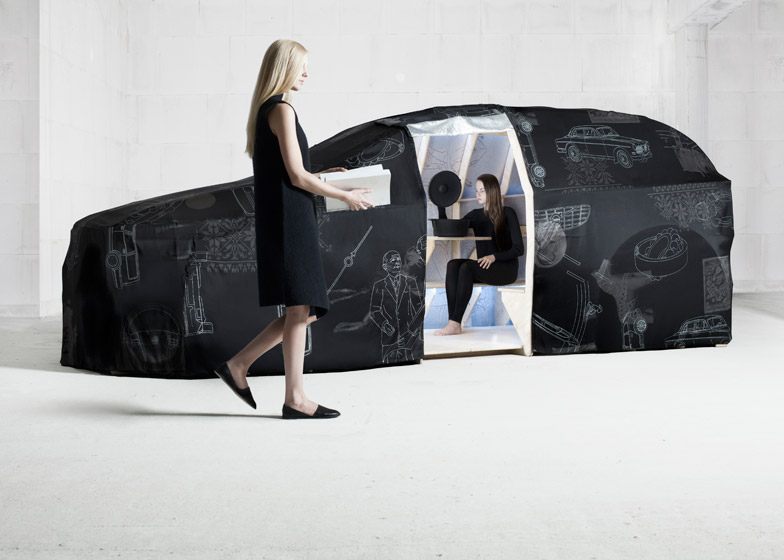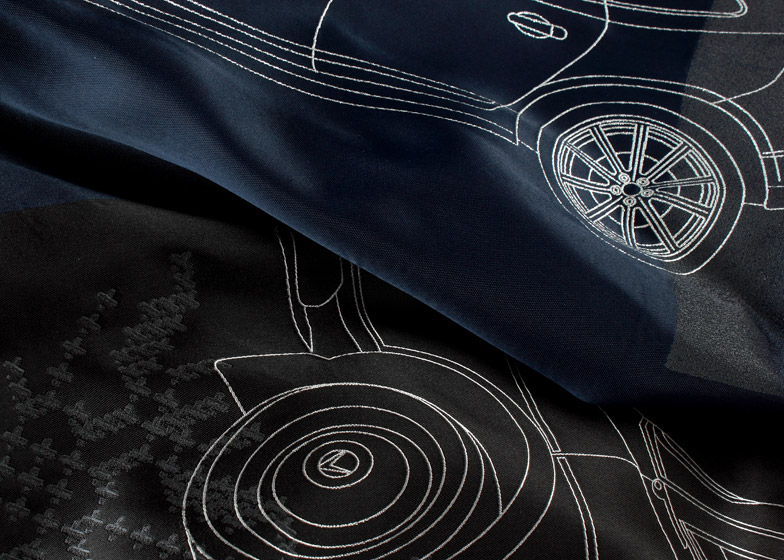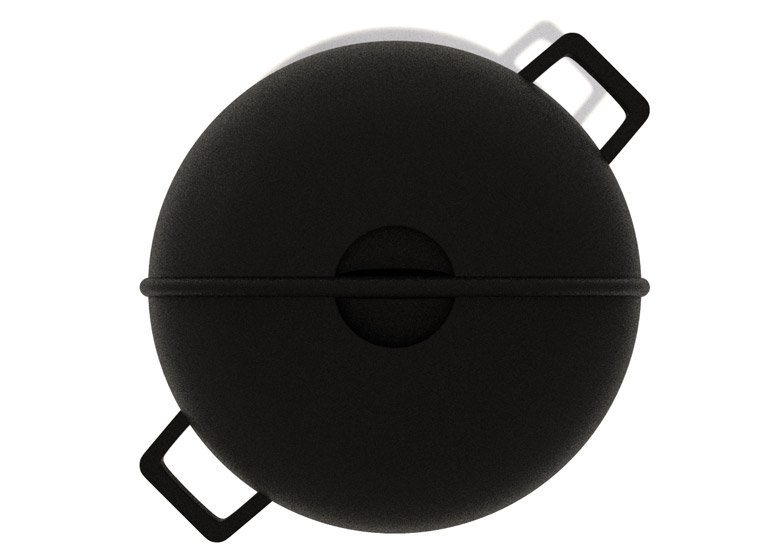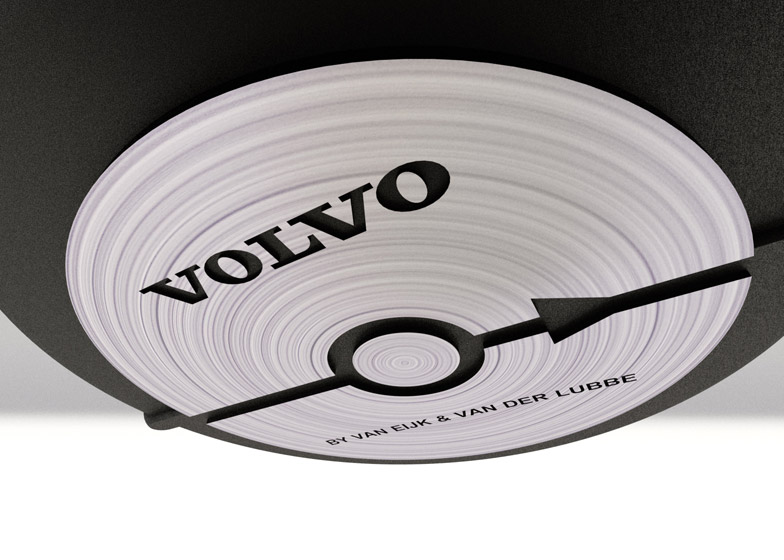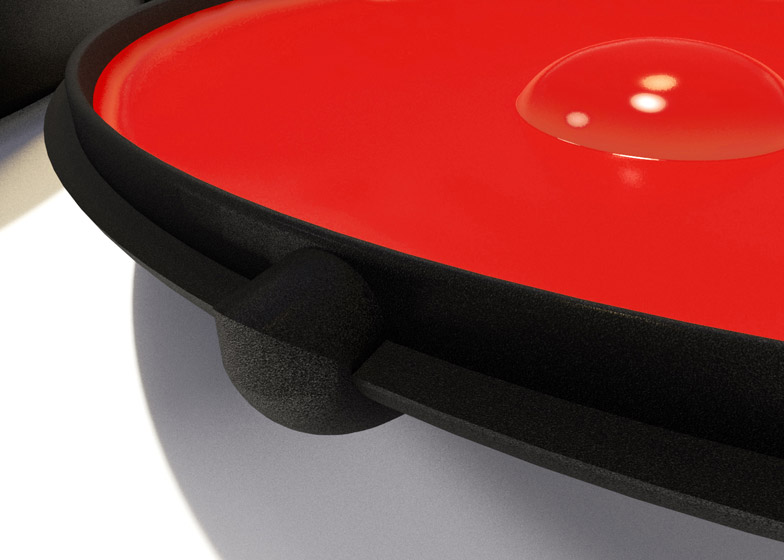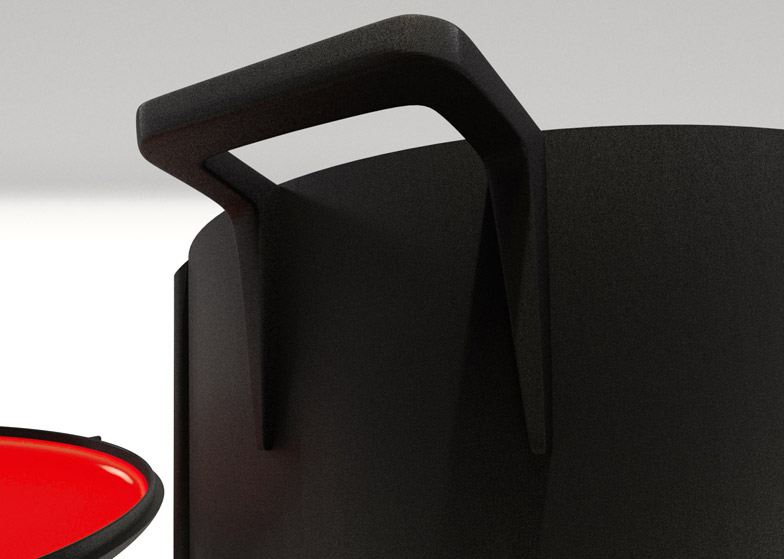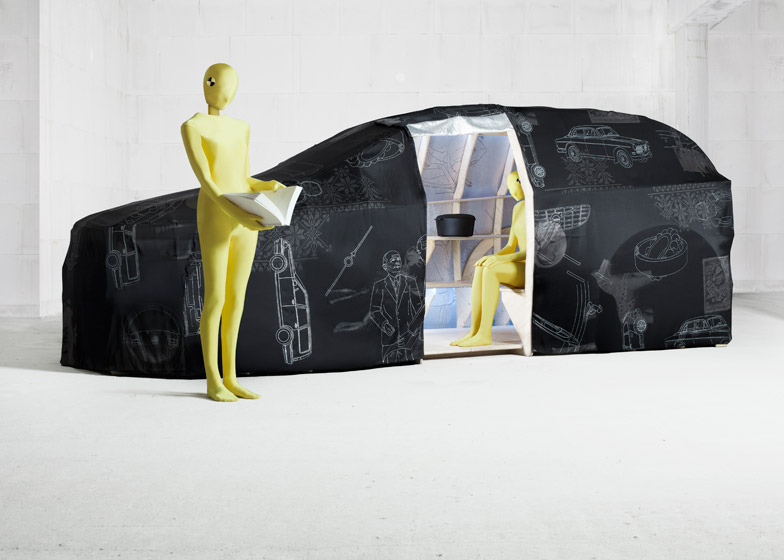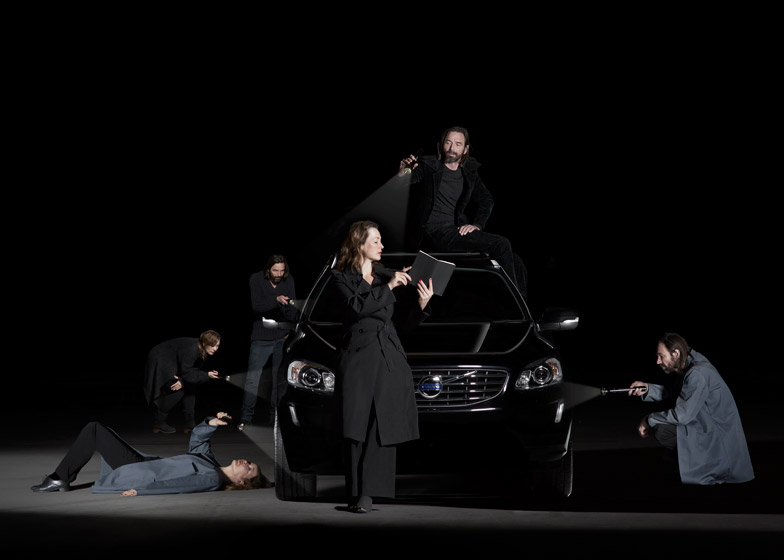Dutch Design Week 2014: Dutch designers Niels van Eijk and Miriam van der Lubbe have created a driverless fabric car concept for Swedish auto brand Volvo as part of a series examining how new developments in technology will change car design (+ slideshow).
Volvo invited Van Eijk & Van der Lubbe to reinterpret the brand's values and one of its models, the XC60, as well as explore ideas around development in car technology, like automated driving.
"We think it is interesting for consumers to realise what these developments are going to mean. In the next 15 years cars will drive automatically, you don't need to steer anymore, you don't need to be behind the wheel, let's say," Miriam Van der Lubbe told Dezeen.
"But you also have this social change – 20 years ago the car had this very status symbol, but now younger people are not much interested in cars," she said.
"They see them much more as a burden. They get their status from other types of products like their iPhone 6. Sales for cars for younger people are decreasing so you can see that this landscape is really changing a lot."
The first result of the collaboration is an installation that will premier at Dutch Design Week in Eindhoven next week. It features a car made from a wooden frame wrapped in fabric, with an interior designed for a number of "low-tech" activities like sleeping and sharing a meal.
The piece is planned to be the first in a series of three concepts called the Volvo Design Collection, exploring different versions of the future of transport.
"We're starting with high-tech innovation and development, and how it makes the low-tech possible again, to really spend time in a quality kind of way," she said.
"The fact that you're going from a to b stays the same, maybe you go a little bit quicker, but still one fact will be that you spend time. But how are you going to spend it if you're not going to drive anymore and maybe you don't own your own car anymore? What will you do with this time?"
"It is a possibility to share not only your time and share your space, a car will be an experience in motion much more than a space in motion, but you're going to share also your thoughts and your knowledge, like who are you, what do you need, and where can I help and a social moment in time."
The shape of the car is copied from Volvo's XC60 model, but the inside is hollow with a shell made from fabric that is supported by the wooden ribs that form the frame.
The futuristic textile the duo envisaged could contain the cars functions, but also reflect the history of the brand as well as the heritage of Sweden's textile industry.
For the purposes of the installation, the interior of the car has been divided into two main parts. The first, referred to by Van der Lubbe as the "getting to know you" section, consists of a number of blocks of writing paper.
"A series of paper blocks, you could say, inviting you to write down who are you what are you looking for and where you are going to," said Van der Lubbe. "Making little drawings like you do in a cafe or in a bar, looking for this or that solution."
The other part of the car is arranged as a dining space, an area the designers say is often associated with social interaction. The act of consumption is represented by a cast crude-iron cooking pot that the duo designed specifically for Volvo.
A variety of decorations are also used in the interior.
"We wanted to put down a concept of where this automotive world is heading at also to get people to understand what the changes are going to be or at least to start this discussion," said the designer.
"Regular people who are not into the auto-world cannot imagine these developments are coming up so it's a good starting point for these discussions to come up, 'can we spend our time in a car like this, will it go that way?'"
"The products are more of a starting point to get them into the concept of the developments in the automotive world."
Photography is by Lisa Klappe.

